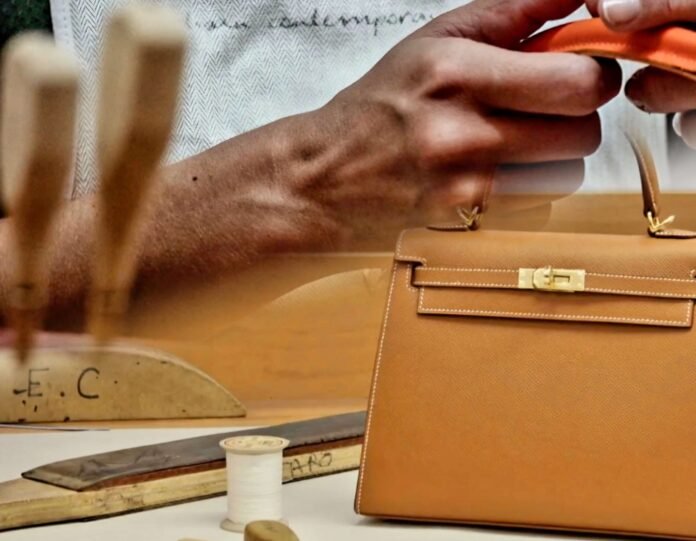A TikTok video claiming that “80 percent of luxury bags are made in China” has ignited heated discussion across the fashion industry and beyond – and about the real cost of luxury goods.
The post, from the account senbags2, has sparked major controversy and questions about what consumers are really paying for.
“They take almost finished bags from China factories and just do the repackaging and logo installing. Something like that,” the user claimed.
A similar post on X, also highlighted the real cost that behind the iconic bags:
But how much of this is true—and what is really going on behind the scenes of fashion’s most elite houses?
Where are luxury bags really made?
The luxury fashion industry is home to around 70 to 100 top-tier brands, many owned by conglomerates like LVMH and Kering. These brands, especially when it comes to high-ticket items like handbags, heavily guard their manufacturing processes.
Hermès, for example, produces its handbags entirely in France. With workshops in Pantin, Ardennes, Normandy, and Lyon, each Hermès bag reportedly takes 18 to 40 hours to craft.
“For styles like the Birkin, Kelly or Constance, artisans can train for up to 5 years before they are able to make one.”
Each bag also comes with hot-stamped artisan codes that authenticate the time, place, and person behind the creation.
Other popular brands: Prada, Miu Miu, Saint Laurent
According to the Q4 2024 Lyst Index, the most popular luxury brands include:
- Prada & Miu Miu: Both are produced in Italy, with key manufacturing centered at the Valvigna complex in Tuscany.
- Saint Laurent: Manufactured in both France and Italy. Saint Laurent’s Tuscany facility sits alongside those of Gucci and Dior.
What do the laws say?
US Labeling (FTC Standards):
To qualify as “Made in USA,” all significant parts, processing, and labor must occur in the US.
EU guidelines:
Products must undergo their last substantial transformation in the country to be labeled “Made in Italy” or “Made in France.”
Some French brands go further, meeting Origine France Garantie (OFG) standards—which require that over 50% of the unit cost comes from French production.
The China angle: What viral videos are showing
As part of escalating U.S.-China trade tensions, Chinese suppliers are sharing videos online, claiming they manufacture for top luxury brands like Birkin, Louis Vuitton, and Chanel—and offering similar items at one-tenth the price.
A supplier who makes bags for Birkin said that the cost price of models that sell for $34,000 are actually as low as $1,400.
These posts often highlight:
- High-quality materials
- Skilled labor
- No-brand versions
- Free shipping & import duty coverage
While these claims haven’t been independently verified, experts believe it’s part of a strategic move amid global trade tensions—an attempt to undermine trust in Western brands.
A price tag for heritage, not just hardware
While some parts or base materials may originate in China, top luxury brands like Hermès, Prada, and Saint Laurent adhere to strict manufacturing standards to maintain authenticity and value. The true cost of luxury often lies in artisanal skill, heritage, and branding—not just materials.
So is your $30,000 Birkin made in China? Technically, no. But the debate is now bigger than country of origin—it’s about transparency, trade, and what luxury really means.

